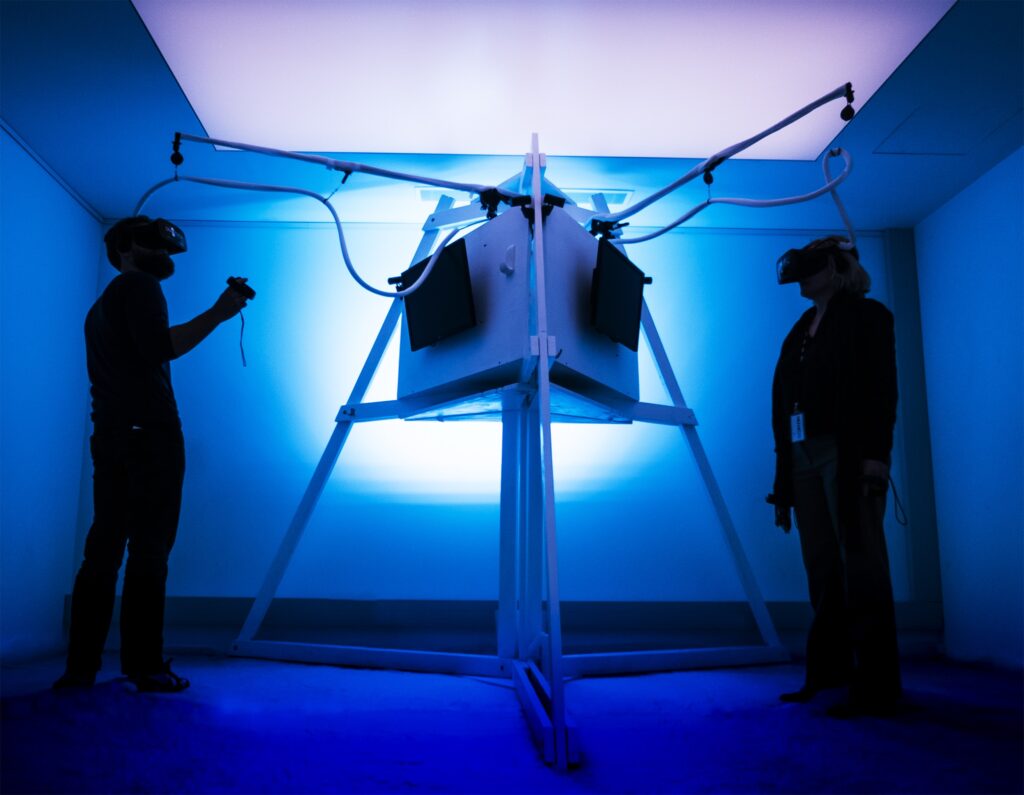Virtual and augmented reality have been some of the most talked-about technologies in recent years, with the potential to transform the way we interact with the digital world. The potential for these technologies is limitless, ranging from immersive gaming experiences to virtual shopping trips and medicinal applications. So what is virtual and augmented reality, and how do they work? We’ll look at the technology underlying these advances, their current and potential applications, and what the future holds in this thorough guide.
What is Virtual Reality?
Virtual reality (VR) is a technology that simulates an environment that might be similar to or completely distinct from reality. It usually entails wearing a headset or using additional gadgets that track movement and deliver a 3D visual and aural experience. The idea is to immerse the user in the virtual environment, interacting with items and characters as if they were real.
VR has mostly been employed in the gaming sector to provide players with a more immersive experience. It has, however, found use in training simulations for a variety of industries, including healthcare, aviation, and the military. Virtual reality technology has also been utilized to provide virtual tours of real-world venues like museums and historical sites.
What is Augmented Reality?
Augmented reality (AR) is a technology that superimposes digital content on top of reality. Unlike virtual reality, which creates an altogether new environment, augmented reality (AR) enhances and augments the real world by adding digital information or objects to it. AR can be accessed via smartphones, tablets, or smart glasses, allowing users to engage with the digital environment in a more natural and seamless manner.
AR has a wide range of applications in retail, where technology is used to create interactive shopping experiences. It has also been utilized in education to help students visualize complex subjects in a more concrete manner. AR has also been used in advertising, allowing businesses to develop immersive campaigns that engage customers on a more personal level.

Applications of Virtual and Augmented Reality
Both VR and AR have the potential to revolutionize numerous industries, including healthcare, education, entertainment, and more.
In healthcare, VR has been used to train medical professionals and simulate surgeries, providing a safe and controlled environment to practice complex procedures. AR has been used to create visualizations of complex medical data, allowing doctors to better understand patient conditions and treatment options.
VR and AR have been utilized in education to provide immersive learning experiences that allow students to explore complicated subjects in a more tangible way. VR has also been utilized to recreate historical events and settings, making learning about the past more compelling.
VR has been utilized to produce immersive gaming experiences in the entertainment industry, while AR has been used to make interactive movies and television shows. Virtual and augmented reality concerts and events have also been created using both technology.
Companies that are at the top of the world and deal with these technologies:
- Oculus – Oculus is a VR company owned by Facebook that has become a leader in the VR space. They are best known for their Oculus Rift and Oculus Quest headsets, which provide high-quality immersive VR experiences. Oculus has also invested in developing their own VR content and has a large community of developers creating games and applications for their platform.
- Magic Leap – Magic Leap is an AR company that has developed a unique AR headset that overlays digital content onto the real world in a way that appears more natural and seamless than traditional AR experiences. They have raised billions of dollars in funding and have partnerships with major companies like AT&T, creating excitement around their potential to revolutionize the AR space.
- Unity Technologies – Unity Technologies is a software company that provides tools and resources for developers to create VR and AR applications. Their Unity platform is widely used in the industry, allowing developers to create high-quality content for multiple platforms. Unity also offers training and resources to help developers learn and improve their skills, making them a go-to resource for VR and AR developers.
Future Predictions
The potential for virtual and augmented reality is vast, and as the technology continues to develop, we can expect to see even more exciting applications in the future. Some predictions include:
- Increased use of VR in the workplace, allowing for remote collaboration and training.
- More advanced AR technology that can create more realistic and interactive experiences.
- The use of VR and AR in the tourism industry, allowing users to explore new destinations without leaving their homes.
- The integration of VR and AR with artificial intelligence, allowing for more personalized and intuitive experiences.
Conclusion
From healthcare and education to entertainment and advertising, virtual and augmented reality have the potential to alter a wide range of industries. As technology advances, we can anticipate even more intriguing uses in the future. VR and AR are paving the way for a more engaging and interactive digital environment, whether it’s through more realistic gaming experiences or providing a more tangible way to grasp complicated topics.
Thanks for reading. Also check our latest articles.










